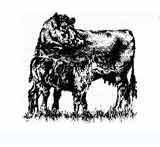

Overview
Agriculture is big business in Colorado, contributing $40 billion annually to the state’s economy. Whether you are farming on a small acreage, in urban spaces or are involved in large-scale production agriculture, Extension resources provide research-based information for producers located from the plains to the mountains. Topics include: Crops, Farm Management, and Livestock.
Agriculture in the Upper Arkansas Valley is an important component of our local economy. Historically known as the “Iceberg Lettuce Capital of the United States,” agriculture in Chaffee County has become much more diverse.
Resources
|
Livestock Production Resources Includes range management, animal diseases, cold rangeland and animal considerations and more! Learn more |
|
Commercial greenhouses and Colorado Crop Variety Testing. Learn more |
|
Colorado Building Farmers program, drought resources, food systems and ag policy resources and more. Learn more |
|
Colorado Farm to Market website, agriculture and business management, Online AgPlan planning tool, and more! Learn more |
Publications
CSU Extension has many publications to help the small acreage owner, urban agriculture, producer and others interested in Agriculture in Colorado. Topics in this section include:
Crops
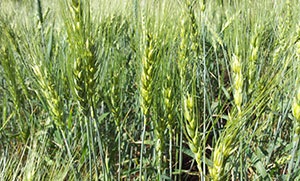
Diseases
- Beans: Bacterial Diseases (5/11)
- Beans: Root Rots of Dry Beans (5/11)
- Beans: Rust of Dry Beans (5/11)
- Beans: White Mold of Dry Beans (5/11)
- Blackspot Bruise in Potatoes (6/19)
- Coryneum Blight (9/09)
- Fusarium Wilt & Yellows of Sugar Beet & Dry Bean (9/13)
- Importance of Plant Parasitic Nematodes in Colorado Crops (5/11)
- Onions: Botrytis, Downy Mildew and Purple Blotch (5/11)
- Onions: Soil-Borne Diseases (5/11)
- Preventive Control for Cytospora Canker on Peach (9/18)
- Xanthomonas Leaf Blight of Onion (5/11)
Go to top of this page.
Integrated Pest Management (IPM)
- Colorado Commercial Pesticide Application and Safety Training Guide: Agricultural Insect Control $$
- Colorado Commercial Pesticide Application and Safety Training Guide: Agriculture Plant Disease Control $$
- Ag Seed Treatment Study Guide $$
- Colorado Commercial Pesticide Application and Safety Training Guide: Agriculture Weed Control Study Guide $$
- Colorado Commercial Pesticide Application and Safety Training Guide: Aquatic Pest Control $$
- Colorado Commercial Pesticide Application and Safety Training Guide: Commercial/Residential $$
- Colorado Commercial Pesticide Application and Safety Training Guide: Forest Pest Control $$
- Colorado Commercial Pesticide Application and Safety Training Guide: General Guide $$
- Colorado Commercial Pesticide Application and Safety Training Guide: Industrial Right-of-Way $$
- Colorado Commercial Pesticide Application and Safety Training Guide: Interior Plantscape $$
- Colorado Commercial Pesticide Application and Safety Training: Ornamental Pest Control $$
- Colorado Commercial Pesticide Application and Safety Training Guide: Outdoor Vertebrate Pest Guide $$
- Colorado Commercial Pesticide Application and Safety Training Guide: Post-Harvest Treatment of Potatoes $$
- Colorado Commercial Pesticide Application and Safety Training Guide: Public Health Pest Control $$
- Colorado Commercial Pesticide Application and Safety Training Guide: Rangeland Pest Control $$
- Colorado Commercial Pesticide Application and Safety Training: Turf Pest Control $$
- Colorado Commercial Pesticide Application and Safety Training Guide: Wood Destroying Organisms $$
- Fumigation Study Guide $$
- Livestock Pest Control Study Guide $$
- Research & Demonstration Study Guide $$
- Stored Commodities Study Guide $$
- Wood Preservation/Treatment Study Guide $$
Go to top of this page.
Irrigation
- Benchmarking Irrigation Water Use on Mixed Vegetable Farms in Northern Colorado: 2010-2018
- Colorado Agricultural Meteorological Network (CoAgMet) and Crop ET Reports (12/14)
- Crop Water Use and Growth Stages (12/14)
- Determining Irrigation Run Times with Drip Tape on Specialty Crops (9/19)
- Domestic Water Quality Criteria (11/13)
- Effects of Weather on Irrigation Requirements (12/14)
- Glossary of Water Terminology (5/12)
- Home Sprinkler Systems: Backflow Prevention Devices (6/20)
- Home Sprinkler Systems: Preparing Your Sprinkler System for Winter (10/14)
- Irrigation: Inspecting and Correcting Turf Irrigation System Problems (10/14)
- Irrigation Pumping Plant Efficiency (9/11)
- Irrigation Scheduling (2/05)
- Irrigation Scheduling: The Water-Balance Approach (1/15)
- Irrigation Water Quality Criteria (10/14)
- Limited Irrigation Management:Principles and Practices (1/09)
- Micro-Sprinkler Irrigation for Orchards (11/13)
- Small Acreage Irrigation Guide (6/18)
- Seasonal Water Needs and Opportunities for Limited Irrigation for Colorado Crops (2/17)
- Subsurface Drip Irrigation (SDI) (8/14)
Go to top of this page.
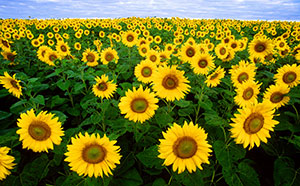
Production
- Agricultural Pesticide Use – Best Management Practices (6/20)
- Avoiding 2,4-D Injury to Grapevines (7/11)
- Bio-Pharming (4/08)
- Bt Corn: Health and the Environment (9/13)
- Capric Acid: A Promising Next-Generation Herbicide for Organic Specialty Crop Production
- Cleaning and Disinfecting Potato Storage
- Climate Change Resiliency in Colorado: Cropping Systems Best Management Practices (11/19)
- Climate Change Resiliency in Colorado: Grazing System Best Management Practices (11/19)
- Colorado Corn – Best Management Practices (6/20)
- Cover Crops Grown Post-Wheat for Forage Under Dryland Conditions in the High Plains (6/20) (Collaboration with KSU)
- Current Impacts of Outdoor Growth of Cannabis in Colorado (7/15)
- Dryland Cropping Systems (12/14)
- Genetically Modified (GM) Crops: Techniques and Applications (8/14)
- Guide for Producing Dryland Camelina in Eastern Colorado (7/11)
- Industrial Hemp: Reemergence of an Alternative Crop in the U.S. (2/20)
- Managing Corn Pests with Bt Corn (12/14)
- Managing Spring Planted Cover Crops for Livestock Grazing under Dryland Conditions in the High Plains Region (12/18)
- Manure Utilization – Best Management Practices
- Minituber Production in Greenhouses – Management of Diseases, Insects and Physiological Disorders (4/19)
- Pesticide Application Equipment for Enclosed Space Production (10/19)
- Pesticide and Fertilizer Storage and Handling – Best Management Practices
- Plant Analysis (11/13)
- Plant Variety Protection Act (9/14)
- Pulse Crops and their Key Role as Staple Foods in Healthful Eating Patterns (9/20)
- Seed: Certified and Registered Production (9/14)
- Seeds: Yield Improvement with High Quality Seed (12/14)
- Zinc and Iron Deficiencies (12/11)
Go to top of this page.
Soil
- Best Management Practices for Nitrogen Fertilization to Protect Water Quality
- Biochar in Colorado (1/16)
- Changing Soil pH (12/21)
- Diagnosing Saline and Sodic Soil Problems (5/12)
- Controlling Soil Erosion From Wind (8/09)
- Fertilizing Cool Season Grasses and Grass/legume Mixtures (9/11)
- Fertilizing Corn (9/14)
- Fertilizing Dry Beans (4/09)
- Fertilizing Mountain Meadows (4/09)
- Fertilizing Potatoes in Colorado (6/19)
- Fertilizing Spring-Seeded Small Grains (9/14)
- Fertilizing Sugar Beets (4/15)
- Fertilizing Winter Wheat (9/14)
- Field EC Mapping: A New Tool to Make Better Decisions (5/11)
- Grain Protein Content and N Needs (12/14)
- Legume Seed Inoculants (9/14)
- Management-intensive Grazing (MiG) and Soil Health (7/20)
- Nitrates in Drinking Water (11/13)
- Nitrogen and Irrigation Management (10/14)
- Phosphorus Fertilization – Best Management Practices
- Phosphorus Fertilizers for Organic Farming Systems (10/14)
- Seed: Certified and Registered Production (9/14)
- Selecting an Analytical Laboratory (11/13)
- Soil Management: Saline (10/14)
- Soil Management: Sodic (5/12)
- Soil Sampling (3/10)
- Soil Solarization, an alternative to soil fumigants (2/11)
- Soil Testing (11/13)
- Soil Test Explanation (3/10)
- Wind Erosion Processes and Control (2/19)
Go to top of this page.
Farm Management
Economics
- Break-even Method of Analysis (3/12)
- Farmers’ Markets and Direct Marketing for Colorado Producers (6/09)
- Financial Emergency Preparedness (12/14)
- How to be Successful at a Farmers’ Market (6/19)
- Living on an Irregular Income (9/14)
Spanish Version - Long-Term Loan Repayment Methods (3/12)
- Partial Budget Form (11/13)
- Purchasing Rural Property in Colorado (1/20)
Go to top of this page.
Equipment
- Alcohol for Motor Fuels (11/14)
- Sprayer Calibration Fundamentals (1/05)
- Triglyceride Blends (TGBs) as an Option for On-Farm Fuel Production (11/18)
Go to top of this page.
Safety
- Agricultural Pesticide Protective Equipment (12/15)
- Agricultural Respiratory Protective Equipment (3/07)
Go to top of this page.
Livestock
Go to top of this page.
Health
- Ailments of Chickens (10/18)
- Avian Flu (2/22)
- Bovine Respiratory Disease: Preconditioning Calves (4/16)
- Brooding and Rearing Chicks for the Family Flock (3/20)
- Brooding and Space Requirements for Poultry (10/18)
- Dead Bird – Now What (2/22)
- Enterotoxemia (Overeating Disease) (5/10)
- Gastrointestinal Parasites in Sheep and Goats: Frequently Asked Questions (5/10)
- H1N1 Influenza and Pigs (12/14)
- Horses’ Health: Rabies in Horses: Should Horses be Vaccinated in Colorado? (2/14)
- Keeping Layers for the Family Egg Supply (3/20)
- Lamb Feedlot Nutrition (2/14)
- Nitrate Poisoning (6/11)
- Pinkeye Problems in Cows (5/10)
- Pregnancy Toxemia (Ketosis) in Ewes and Does (8/10)
- Prussic Acid Poisoning (6/11)
- Q Fever (12/14)
- Raising Poultry the Organic Way – Disease Control and Feeding (12/19)
- Raising Poultry the Organic Way – Management and Production (3/20)
- Sanitation and Disease Prevention for Poultry (10/18)
- Trichomoniasis Prevention: The Cost Per Cow to Prevent (3/09)
- Urea and NPN for Cattle and Sheep (6/11)
- Urinary Calculi in Wether Lambs/Kids (8/10)
- Vaccination Programs for Chickens in Colorado (12/19)
Go to top of this page.
Judging
Go to top of this page.
Management
- Alternative Feeds for Cattle During Drought (11/20)
- Anaerobic Digestion of Animal Wastes in Colorado (5/11)
- Best Management Practices for Manure Utilization (9/99)
- Best Management Practices for Reducing Ammonia Emissions (11/10)
- Best Management Practices for Reducing Ammonia Emissions: Beef Cattle Nutrition (12/12)
- Best Management Practices for Reducing Ammonia Emissions: Lagoon Covers (12/12)
- Best Management Practices for Reducing Ammonia Emissions: Manure Application (12/12)
- Best Management Practices for Reducing Ammonia Emissions: Feedlot Pen Management (12/12)
- Caring for Livestock After Disaster (12/10)
- Caring for Livestock Before Disaster (12/10)
- Caring for Livestock During Disaster (8/13)
- Colorado Forage Guide (12/12)
- Dryland Pasture Condition Assessment & Guidelines for Colorado Small Acreages (4/17)
- Early Warning for Stocking Decisions in Eastern Colorado (12/20)
- Feed Composition for Cattle and Sheep (12/14)
- Formulating Rations With the Pearson Square (6/12)
- Change in Long-Term Sustainable Stocking Rate in Eastern Colorado (4/21)
- Glossary of Wool and Fiber Terms (8/10)
- Grease Wool Grades and Lengths (5/11)
- Horses’ Health: Rabies in Horses: Should Horses be Vaccinated in Colorado? (2/14)
- Lamb Feedlot Nutrition (2/14)
- Livestock Management in the Mountains
- Management-intensive Grazing (MiG) on Irrigated Pasture (9/20)
- Managing Cattle Impacts When Grazing on Wet Soils (1/20)
- Manure Management for Small Acreages (7/18)
- Practical Feeding Methods for Small Poultry Flocks (12/19)
- Pregnancy Toxemia (Ketosis) in Ewes and Does (8/10)
- Sheep Feeds and Management Guidelines During Drought (4/13)
- Stretching Your Horse’s Hay Supply During Drought (10/14)
- Trichomoniasis Prevention: The Cost Per Cow to Prevent (3/09)
- Urea and NPN for Cattle and Sheep (6/11)
- Urinary Calculi in Wether Lambs/Kids (8/10)
- Wildfire Preparedness for Horse Owners (3/14)
Go to top of this page.
Programs
Agricultural Feature Programs
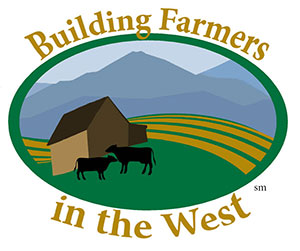
Building Farmers in the West |
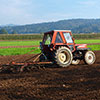 Food Systems Global impact through local engagement in food systems led research, outreach and instruction. Learn more |
 Small Acreage Management Whether new to farming or an old pro, understanding your land and resources is crucial. Visit now |
Websites
CSU-affiliated sites
- AgrAbility – Assistance with Farm/Ranch Disabilities
- Agricultural Experiment Station
- Agricultural Water Conservation Clearinghouse
- Agriculture & Business Management
- Animal Diseases
- Blueprints and Housing Equipment Plans
- Building Farmers in the West
- Colorado Integrated Pest Management (IPM)
- CoAgMet – ET rates, crop information, impact of climate on crops
- Colorado Environmental Pesticide Education Program
- Crop Variety Performance Testing
- Drought Resources
- Extension Disaster Educational Network (EDEN)
- Fire Resources
- Flood Resources
- Healthy Living with Goats
- Irrigation Assessment Tools
- Livestock Mortality Composting
- Markets & Weather
- Noxious Weeds & Invasive Plant Species
- Nutrient Digest
- Plant Diagnostic Clinic
- Poisonous Plants Guide
- Range Management Resources
- Severe Cold Weather Rangeland and Livestock Considerations
- Sheep: Evaluation of Grass Clippings as a Feed Source
- Sheep: Feeding Cull Onions to Lambs and Ewes
- Small Acreage Services Database
- Soil, Water and Plant Testing Lab
- Spraying Trees to Protect Against Mountain Pine Beetle
- Understanding Biotechnology Issues
- Urban Agriculture – Denver County
- Weed Science Information
- Western Center for Integrated Resource Management
External sites
- Agricultural Law Centers
- Colorado Agricultural Development Authority
- Colorado Department of Agriculture
- How Diet Affects Your Skin
- National Ag Safety Database for resources on Farm Safety
- National Sustainable Agriculture Information Service
- Sustainable Agriculture Research and Education
- U.S. Department of Agriculture
- U.S. Pork Center of Excellence
- Western Water Assessment
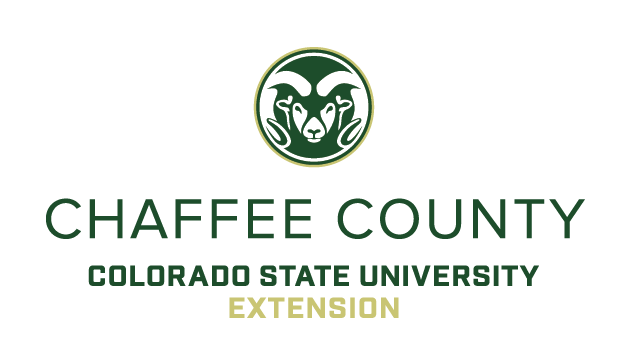
Contact Information:
CSU Extension Chaffee County
Mailing: 10165 CR 120, Salida, CO 81201
Physical: 185 Quigot Court, Salida, CO 81201
coopext_chaffee@ mail.colostate.edu
(719) 539-6447
Chaffee County Extension Programs
Discrimination Statement
Colorado State University Extension is an equal opportunity provider.
Colorado State University does not discriminate on the basis of disability and is committed to providing reasonable accommodations.
CSU’s Office of Engagement and Expansion ensures meaningful access and equal opportunities to participate to individuals whose first language is not English. col.st/ll0t3
Colorado State University Extension es un proveedor que ofrece igualdad de oportunidades.
Colorado State University no discrimina por motivos de discapacidad y se compreomete a proporcionar adaptaciones razonables.
Office of Engagement and Expansion de CSU garantiza acceso significativo e igualdad de oportunidades para participar a las personas quienes su primer idioma no es Ingles. col.st/ll0t3


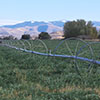 Agronomy and Vegetable Production Resources
Agronomy and Vegetable Production Resources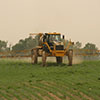 General Agricultural Resources
General Agricultural Resources Agricultural Business Resources
Agricultural Business Resources